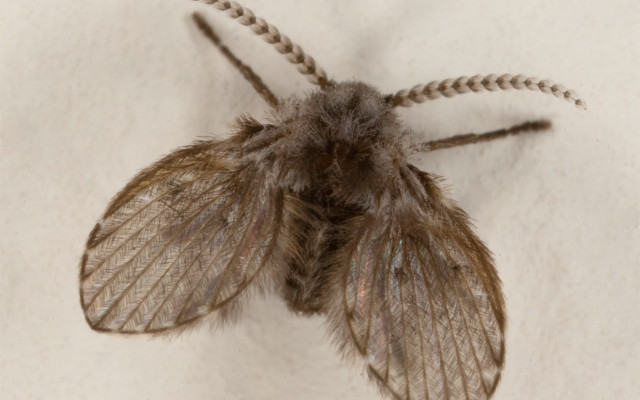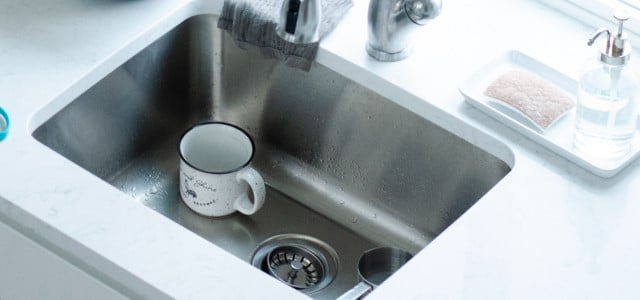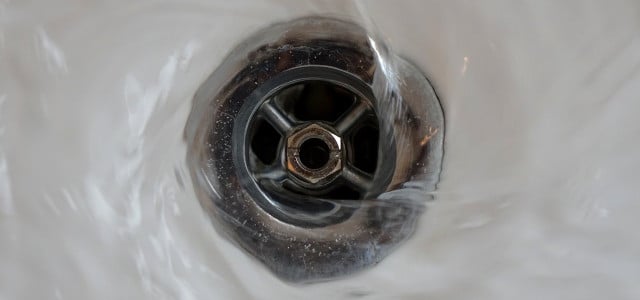Do bugs fly out from your sink when you turn the facet first thing in the morning? These pesky Psychodidae are commonly known as drain flies (or sink flies, sewer flies, filter flies, and sewer gnats). Before a kitchen ridden with drain flies drives you mad, here’s all you need to know about how to get rid of drain flies.
What are Drain Flies?
Drain flies come in brown, black, or grey. They are usually 1.5 to 5 mm in length and their hairy wings make them look fuzzy. These rather cute critters live off the food in your trash and inside your sink.
Where do They Come From?
In nature, drain flies seek shelter in small pools of water. In your house, they look for any spots of water that might hold food. If you don’t remove them or their food source, they’ll stay to mate and lay eggs – meaning if you don’t get rid of drain flies their numbers will keep multiplying.
If you find drain flies flying around, but can’t find where they are hiding out, be sure to check the
- kitchen sink
- fridge/freezer (inside and under)
- pantry
- drawers
- toilet, bath, and shower
- laundry hamper
- …really, anywhere there’s water or food.

Are Drain Flies Harmful?
Still wondering why you should try to get rid of drain flies? Although drain flies are not particularly harmful as such, they can spread bacteria and contaminate your food. If you don’t regularly remove their food source, it will become their breeding ground (gross). Drain flies only live about 20 days, but they lay eggs often. It takes the white wriggling larvae about a week to become a full furry adult. So don’t let a few wandering drain flies morph into a massive infestation!
How to Get Rid of Drain Flies, Method #1: Clean Your Kitchen
If you’re already dealing with a horde of hungry drain flies, it’s essential to remove all wet food, waste, and water from your kitchen area and properly store away food in your fridge or pantry. Take out the trash, clean the kitchen, and completely dry areas where you prep, make, eat, clean, or store food.
How Do You Tell if You Still Have Drain Flies?
Everything looks clean, but you still spot drain flies about? To check if drain flies are hiding in the sink’s pipes, stick a piece of tape to the top of your drain at night and check to see if any drain flies are stuck in the morning.
How to Get Rid of Drain Flies, Method #2: Clean Your Pipes
Think there might be food stuck down your drain? To help get rid of drain flies, clean your sink drain in four steps:
- Boil about a liter of hot water and pour it down the drain. This should flush out and/or kill most of the drain flies that are there.
- Use a metal pipe cleaner to clear out all the stuck food or hair that is clinging to the drain’s insides.
- Although chemical products work, good ole’ baking soda and vinegar are a simple and more sustainable alternative. Just pour a half cup of baking soda down the drain. Then follow with a cup of vinegar. Pour the vinegar slowly so bubbles and fizz don’t overflow your sink. Don’t worry, this chemical reaction is totally safe.
- Let the mix sit for one hour. Then pour another liter of boiling water to finish.
Method #3: Drain Fly Traps
As a last resort against lingering drain flies flourishing in hidden spaces, set an apple cider vinegar drain fly trap:
- Place a small bowl of apple cider vinegar on the counter or next to the sink.
- Cover the bowl with plastic wrap. Be aware that plastic wrap is not a sustainable product, so use it sparingly.
- Poke small holes into the plastic wrap with a fork or toothpick.
- Watch drain flies fly in (with little chance of figuring out their way out).
Are drain flies still hiding in your sink drain? Set a vegetable oil drain fly trap:
- Take a small cup.
- Cover the inside with vegetable oil.
- Place the oiled cup upside-down and over the drain covering.
- Turn it over later and find your catch.
Preventing Drain Fly Infestations
Worried your karma score will shrink by resorting to extreme cleaning and trapping, and killing the drain flies? The best way to fight drain fly infestations is by preventing them in the first place.
- Always maintain a clean, dry and food-free kitchen.
- Clean your pipes regularly and make sure you unclog your drains as soon as a blockage happens.
- You can block off drains that are rarely used with rubber stoppers.
- Always get rid of standing water in and around your home, including mop buckets.
Do you like this post?







